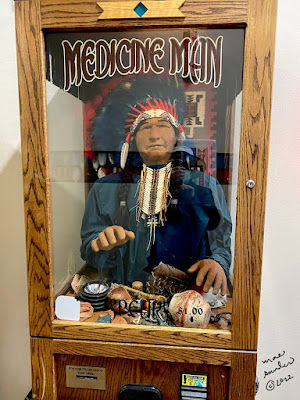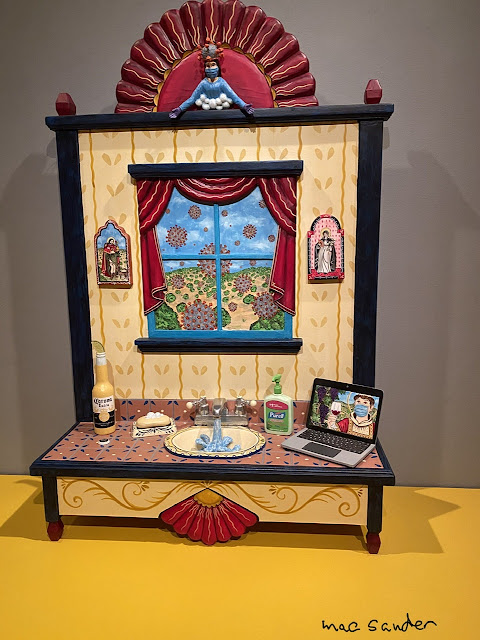 |
Outside the car windows we have seen many wind farms in several states.
I enjoy seeing evidence of what makes our nation productive. I did not take photos of the
many trains, often 2 miles in length with containers, with tank cars, and with other cargo. |
 |
Along the route are many cattle ranches, which are pretty to look at.
There are also feedlots, which are not pretty — you can smell them for miles!
|
 |
At the welcome center they even gave us this
large brochure about Route 66. |
 |
The Will Rogers Archway is a rest stop built over the roadway in Oklahoma.
More Route 66 memorabilia is in the gift shop — there’s also a McDonald’s. |
 |
| A statue of local hero Will Rogers (1879-1935) |
 |
| The view from the archway. |
Oklahoma’s stretch of old Route 66 offers a large number of tourist attractions. The original Route 66 was designed in 1926 to encourage road travel by the growing number of American families with automobiles. Route 66 began in Chicago, and ended in Los Angeles, and in the early years attracted tourist business for the small towns all along the way. By current standards, the time to drive the old road was endless!
In the Dust Bowl era of the 1930s, Route 66 was the route of the “Okies” — families displaced from farms by drought and economic hardships of the Depression, many from Oklahoma. John Steinbeck, in his famous book about these families and their journey west, named it “The Mother Road.” Woody Guthrie, who was born and grew up in a town on Route 66, wrote many songs about road travel by homeless wanderers seeking a better life. And Nat King Cole, in 1946, sang “Get your kicks on Route 66.”
Traveling across the country, I’ve often driven the newer four-lane divided Interstate highways that replaced the old two-lane Route 66 (though in 1960, on a family vacation from St. Louis to California, I did see at least some of the original). Instead of going through the middle of small towns, the Interstates are limited access, and mainly bypass the town centers — leaving the old diners, roadside motels, and souvenir shops behind. Now you take the exits to visit fast-food chains and big gas stations. There are rows of name-brand hotels alongside the frontage roads in the cities, and you don’t need to go into towns at all. But it’s very efficient.
 |
Dinner in Oklahoma City: typical Chinese-American food.
Did you know there are more Chinese restaurants in America than there are McDonald’s? |
 |
| Dinner Thursday in Rolla, MO |
Driving from Santa Fe to Oklahoma City on Wednesday was uneventful, with the usual wide-open spaces and hilly landscapes. Driving from Oklahoma City to Rolla, Missouri on Thursday was a nightmare: the worst pelting rain that we’ve driven through in years. In the morning, the trucks passing me kicked up such a wall of water that sometimes I couldn’t see the lines on the highway — which were the only way that I could navigate. We finally gave up and stopped for 45 minutes until it cleared up a little, but in the afternoon it was nearly as bad. We hope Friday will be better.
Blog post © 2022 mae sander.



















































